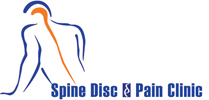LOW BACK PAIN (LBP) is a pandemic disease having 80% of lifetime prevalence, affecting 15-20% population at any point of time, being one of the commonest reason for visit to a doctor & young age morbidity/disability/work absenteeism.
Some of the main causes of back pain include facet arthropathy, sciatica, muscle strain, sacroilitis, bulging or herniated discs and degenerative disc disease. Prolapsed intervertebral discs (PIVD) are the most common cause of low back pain associated with a defined structural Abnormality.
While spinal arthritis is the common reason of young age back pain at prime of their carriers including some bollywood celebrities, disc diseases including slip disc is prevalent in all age groups, in young age due to trauma & in old age due to degeneration.
Patients who are not helped by weeks of conservative therapy are often referred for surgery on the premise that further non-operative care is unlikely to help. Ideally, a patient with low back pain that has persisted beyond a four-week period should be referred to a multidisciplinary pain centre. With interventional pain management patients are getting back to life. It has both diagnostic and treatment values, as sometimes all investigations put together do not give the exact diagnosis.
ONCE THE CONSERVATIVE TREATMENT FAILS:-
Early aggressive treatment plan of pain has to be implemented to prevent peripherally induced CNS changes that may intensify or prolong pain making it a complex pain syndrome. Only 5% of total LBP patients would need surgery & 20% of discal rupture or herniation would need surgery. Nonoperative treatment is sufficient in most of the patients, although patient selection is important even then.
Depending upon the diagnosis one can perform & combine properly selected percutaneous fluoroscopic guided procedures with time spacing depending upon pt`s pathology & response to treatment.
Using precision diagnostic & therapeutic blocks in chronic LBP , isolated facet joint pain in 40%, discogenic pain in 25%(95% in L4-5&L5S1) ,segmental dural or nerve root pain in 14% & sacroiliac joint pain in 15% of the patients. This article describes successful interventions of these common causes of LBP after conservative treatment has failed.
Different Non Surgical Interventions Employed Successfully:
- Epidural Steroid Inj.
- Nerve root sleeve/ transforaminal Inj.
- Epidurogram & Epidurolysis.
- Nucleoplasty- Laser, Drill, RF decompression
- Ozone Discolysis
- Facet Joint Block & RF Denervation
- SI Joint Block
Newer technologies like ozone injection cures most of the patients of slip disc & sciatica, as ozone’s nascent oxygen atom shrinks the disc so taking away pressure from pain sensitive nerves. It is a non surgical, outpatient procedure done under local anesthesia not requiring bed rest for more than day or two & prolonged absence from work realizing the importance of time, at much lower cost with almost no complications. This procedure is done under radio-logical guidance for precise needle targeting and best results. There after patient is given advice for spine care & healthy habits. This technology is latest & many people including medical caregivers don’t know about it. It has benefited millions in developed world and is now available in India also.
| Spine Anatomy |
Piriformis Syndrome
Piriformis syndrome is a neuromuscular disorder that occurs when the sciatic nerve is compressed or otherwise irritated by the piriformis muscle causing pain, tingling and numbness in the buttocks and along the path of the sciatic nerve descending down the lower thigh and into the leg. Diagnosis is often difficult due to few validated and standardized diagnostic tests, but one of the most important criteria is to exclude sciatica resulting from compression/irritation of spinal nerve roots, as by a herniated disk. The syndrome may be due to anatomical variations in the muscle-nerve relationship, or from overuse or strain. Piriformis syndrome should be considered as a possible diagnosis when Sciatica occurs without a clear spinal cause.
Piriformis Injection
TREATMENT-
Symptomatic relief of muscle and nerve pain can be obtained by non-steroidal anti-inflammatory drugs and/or muscle relaxants. Conservative treatment usually begins with stretching exercises and massage, and avoidance of contributory activities, such as running, bicycling, rowing, etc. Some clinicians recommend formal physical therapy, Failure of conservative treatments described above may lead to consideration of various therapeutic injections such as local anesthetics, Anti-inflammatory drugs and/or corticosteroids, botulinum toxin (BOTOX), or a combination of the three. Injection technique is a significant issue since the piriformis is a very deep seated muscle. BOTOX can be injected under CT control. This inactivates the piriformis muscle for 3 to 6 months, without resulting in leg weakness or impaired activity. Rarely surgery may be recommended.
Coccydynia / Tail Bone Pain-
Coccyx pain is often caused by falling backwards or by childbirth, though the cause of pain is unknown in about a third of cases. It makes it very painful to sit down. There are effective treatments available, and the great majority of sufferers can be cured. Most coccyx pain is caused by the coccyx dislocating when you sit. In such cases, manual treatments, if applied by an expert, may relieve the pain. Injections of cortisone help some people.
Coccydynia is often reported following a fall or after childbirth. In some cases, persistent pressure from activities like bicycling may cause the onset of coccyx pain. Coccydynia due to these causes usually is not permanent, but it may become very persistent and chronic if not controlled.
Activities that put pressure on the affected area are bicycling, horseback riding, and other activities such as increased sitting that put direct stress on the coccyx. The medical condition is often characterized by pain that worsens with constipation and may be relieved with bowel movement.
Activities that put pressure on the affected area are bicycling, horseback riding, and other activities such as increased sitting that put direct stress on the coccyx. The medical condition is often characterized by pain that worsens with constipation and may be relieved with bowel movement. sometimes even just a single local nerve block injection at the ganglion impar can give 100% relief of coccydynia when performed under fluoroscopic guidance.
LOW BACK PAIN (LBP) is a pandemic disease having 80% of lifetime prevalence, affecting 15-20% population at any point of time, being one of the commonest reason for visit to a doctor & young age morbidity/disability/work absenteeism.
Some of the main causes of back pain include facet arthropathy, sciatica, muscle strain, sacroilitis, bulging or herniated discs and degenerative disc disease. Prolapsed intervertebral discs (PIVD) are the most common cause of low back pain associated with a defined structural Abnormality.
While spinal arthritis is the common reason of young age back pain at prime of their carriers including some bollywood celebrities, disc diseases including slip disc is prevalent in all age groups, in young age due to trauma & in old age due to degeneration.
Patients who are not helped by weeks of conservative therapy are often referred for surgery on the premise that further non-operative care is unlikely to help. Ideally, a patient with low back pain that has persisted beyond a four-week period should be referred to a multidisciplinary pain centre. With interventional pain management patients are getting back to life. It has both diagnostic and treatment values, as sometimes all investigations put together do not give the exact diagnosis.
ONCE THE CONSERVATIVE TREATMENT FAILS:-
Early aggressive treatment plan of pain has to be implemented to prevent peripherally induced CNS changes that may intensify or prolong pain making it a complex pain syndrome. Only 5% of total LBP patients would need surgery & 20% of discal rupture or herniation would need surgery. Nonoperative treatment is sufficient in most of the patients, although patient selection is important even then.
Depending upon the diagnosis one can perform & combine properly selected percutaneous fluoroscopic guided procedures with time spacing depending upon pt`s pathology & response to treatment.
Using precision diagnostic & therapeutic blocks in chronic LBP , isolated facet joint pain in 40%, discogenic pain in 25%(95% in L4-5&L5S1) ,segmental dural or nerve root pain in 14% & sacroiliac joint pain in 15% of the patients. This article describes successful interventions of these common causes of LBP after conservative treatment has failed.
Different Non Surgical Interventions Employed Successfully:
Epidural Steroid Inj.
Nerve root sleeve/ transforaminal Inj.
Epidurogram & Epidurolysis.
Nucleoplasty- Laser, Drill, RF decompression
Ozone Discolysis
Facet Joint Block & RF Denervation
SI Joint Block
Newer technologies like ozone injection cures most of the patients of slip disc & sciatica, as ozone’s nascent oxygen atom shrinks the disc so taking away pressure from pain sensitive nerves. It is a non surgical, outpatient procedure done under local anesthesia not requiring bed rest for more than day or two & prolonged absence from work realizing the importance of time, at much lower cost with almost no complications. This procedure is done under radiological guidance for precise needle targeting and best results. There after patient is given advice for spine care & healthy habits. This technology is latest & many people including medical caregivers don’t know about it. It has benefited millions in developed world and is now available in India also.
Piriformis Syndrome
Piriformis syndrome is a neuromuscular disorder that occurs when the sciatic nerve is compressed or otherwise irritated by the piriformis muscle causing pain, tingling and numbness in the buttocks and along the path of the sciatic nerve descending down the lower thigh and into the leg. Diagnosis is often difficult due to few validated and standardized diagnostic tests, but one of the most important criteria is to exclude sciatica resulting from compression/irritation of spinal nerve roots, as by a herniated disk. The syndrome may be due to anatomical variations in the muscle-nerve relationship, or from overuse or strain. Piriformis syndrome should be considered as a possible diagnosis when Sciatica occurs without a clear spinal cause.
TREATMENT
Symptomatic relief of muscle and nerve pain can be obtained by non-steroidal anti-inflammatory drugs and/or muscle relaxants. Conservative treatment usually begins with stretching exercises and massage, and avoidance of contributory activities, such as running, bicycling, rowing, etc. Some clinicians recommend formal physical therapy, Failure of conservative treatments described above may lead to consideration of various therapeutic injections such as local anesthetics, Anti-inflammatory drugs and/or corticosteroids, botulinum toxin (BOTOX), or a combination of the three. Injection technique is a significant issue since the piriformis is a very deep seated muscle. BOTOX can be injected under CT control. This inactivates the piriformis muscle for 3 to 6 months, without resulting in leg weakness or impaired activity. Rarely surgery may be recommended.
– See more at: http://spinenpain.com/treatments/lower-back-pain/#sthash.WFAWuavo.dpuf
CERVICAL SPONDYLITIS
Neck pain is one of the most common problems that one encounters in day to day life. Cervical Spondylosis is more frequently seen in women than men. Most people will experience neck pain at some point in their life.
With the increase in number of professionals who sit for hours together doing desk work or sitting for hours in front of the computer and call center jobs which requires continuous sitting in one posture the number of people suffering with cervical spondylosis is on the rise. Cervical spondylosis is a ‘wear and tear’ of the vertebrae and discs in the neck and is the most common cause.
It is very important to attempt to ascertain the facts that can cause it. Cervical spondylosis may be caused by one or more of several complaints. A very common mistake is to perceive the cause of illness as a singular factor. Neck pain can be caused by an injury, muscular problem or by trapped nerve between vertebrae. Inappropriate working or sleeping posture can also be the cause. Mobility of the spine is dependent on several small joints, the derangement of the functioning of one of which, can cause neck pain and reduced movements.
Symptoms of cervical spondylosis?
Symptoms can vary from mild to severe. You may have a flare up of symptoms if you over-use your neck, or if you sprain a neck muscle or ligament. Symptoms include:
- Pain in the neck. This may spread to the base of the skull and shoulders. Movement of the neck may make the pain worse. The pain sometimes spreads down an arm to a hand or fingers. This is caused by irritation of a nerve which goes to the arm from the spinal cord in the neck. The pain tends to wax and wane with flare-ups from time to time. However, some people develop chronic (persistent) pain.
- Some neck stiffness, particularly after a night’s rest.
- Headaches from time to time. The headaches often start at the back of the head just above the neck and travel over the top to the forehead.
- Numbness, pins and needles or weakness may occur in part of the arm or hand. Tell a doctor if these symptoms occur as they may indicate a problem with a ‘trapped nerve’.
– See more at: http://spinenpain.com/diseases/neck-pain-cervical-spondilytis/#sthash.rZiu5L5W.dpuf








No Comments
This post is password protected. Enter the password to view any comments.